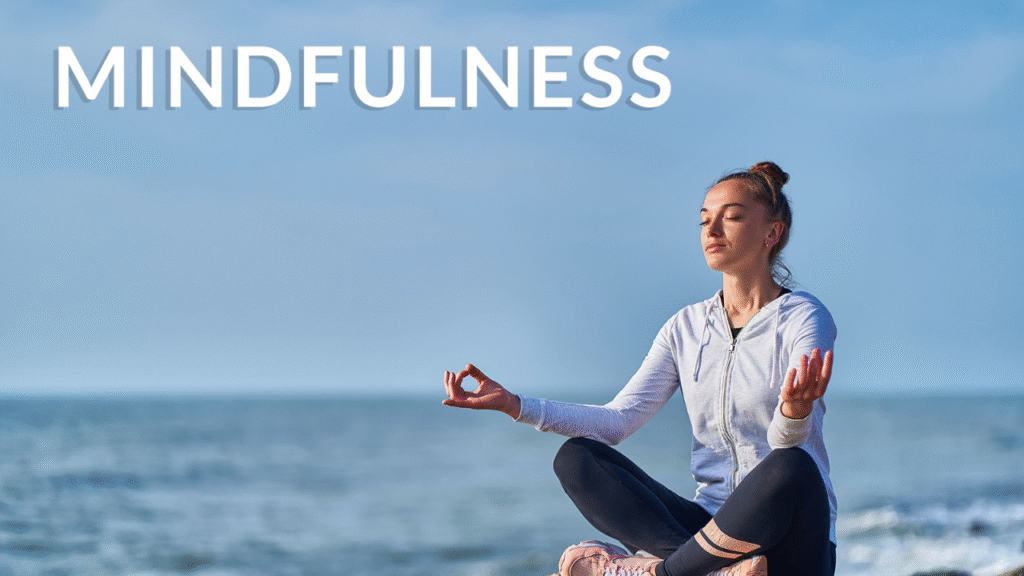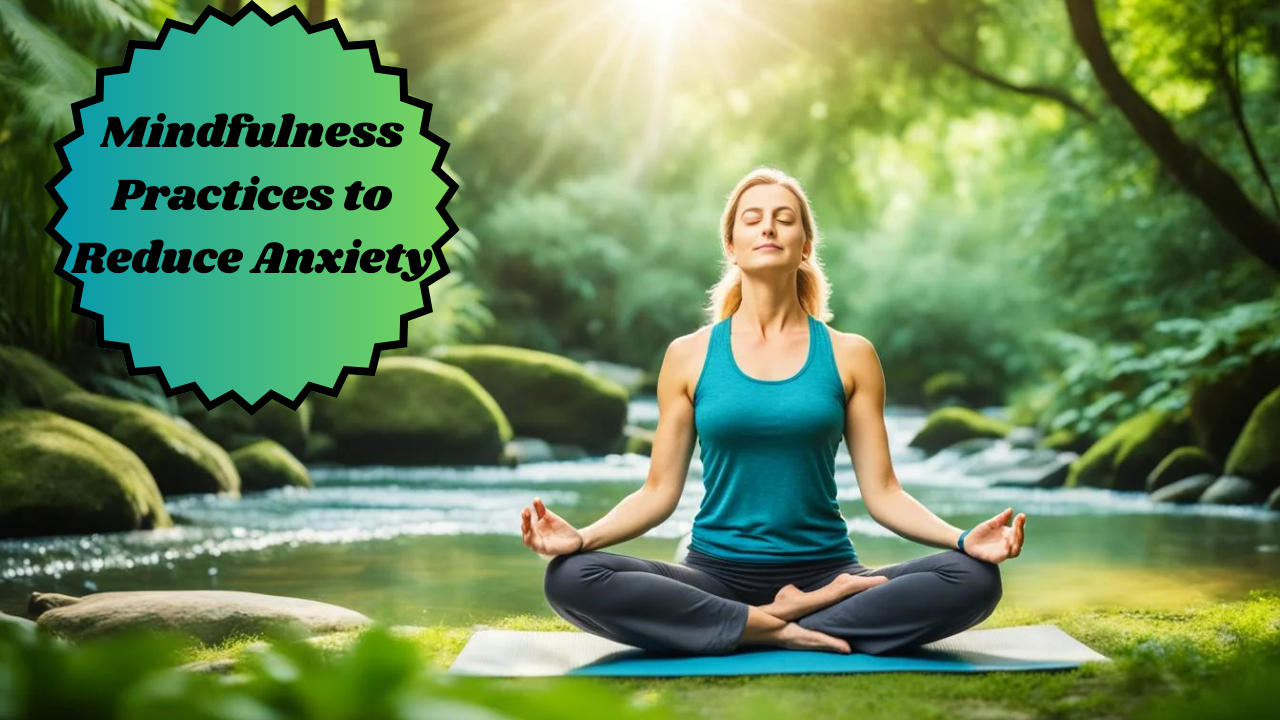There is no denying that stress has become an integral part of our daily lives today, with the deadlines of work and personal commitments that mean so much to you, somewhat overwhelming at times. Thank God for meditation- a sure bet for relieving stress and feeling calm all over again. This article will outline a very effective but simple 10-minute stress meditation that you can practice anywhere, anytime.
Stress Meditation: Its Definition or What is Stress Meditation?
Essentially, stress meditation is one of the modern forms of mindfulness practice-set up especially not to be a classroom meditation method, but to get people into the technique of meditation that helps deal quite well with stress and anxiety. Unlike other traditional types of meditation that involve either sitting and just staying still for hours or never-ending contemplation, stress meditation emphasizes quick techniques that can bring relief. It could be letting your body breathe, letting your senses take in what is around you, or concentrating solely on what’s happening now, just shifting your mindset with that along the way into a kind of quietness.
Benefits of Stress Meditation
Now, let us dive into some important points concerning the benefits of stress meditation before learning the practice itself:

- Immediate Relaxation: The primary thing stress meditation can do for you-the relaxation is immediate. In a few short minutes, there can be a clear change from tension into calmness.
- Better Concentration: As practice continues, concentration and focus increase. It is possible to perform different activities mindfully and with acknowledged intention as the mind is silenced from distractions.
- Emotional Balance–and thus, healthier relationships: Stress meditation helps you recognize your emotions and how you respond to confrontation and emotional interaction. Your explanation of whether this decision is sound will become wiser.
- Physical Health: Chronic stress can affect the body’s physical health. Stress meditation lowers cortisol levels, decreases blood pressure, and probably has its overall positive effect on well-being.
- Increased Mindfulness: The practice enables moment-centered awareness, thus allowing the savoring of life’s experiences rather than becoming entangled in thoughts of the past or future.
Prepare for Your 10-Minute Stress Meditation
To enhance the benefits of meditation, suitable preparations must be conducted. Some dynamics mentioned below will help set the mood for your session:
Find a Quiet Space
An area where you will not be disturbed. It may be a room in your house, a bench in the park, or even in your car during lunch hour. The aim is to create a tranquil environment to assist focus into your meditation.

Get Comfortable
Sit or lie in the position that feels comfortable to you. If seated, have a straight yet relaxed back; if lying down, ensure that it is not too comfortable so as not to encourage sleepiness. And to add to comfort, feel free to use some cushions or a blanket.
Set an Intention
Before you begin, set a positive intention for your practice: “I am open to finding peace” or “I release all my tensions.” Setting an intention usually helps in directing focus throughout the session.
The 10-Minute Stress Meditation Practice
Minute 1: Grounding.
If comfortable, keep your eyes gently closed. Grounding yourself to the present moment, try sensing what is happening at this moment: the contact of your body to whichever surface you are sitting or lying upon.
- Inhale through your nose to a count of four.
- Hold for a count of four.
- Slowly release through your mouth to a count of six.
- This was done three times, filling the lungs up deep.
Again, sense in the body with the inhalation and exhalation; perhaps feel the feet on the ground or some weight from your body on that surface, or perhaps a gentle breeze against the skin.
Minute 2: Acknowledging Thoughts.
It is a good start in the letting-go process to acknowledge them. Thoughts come for a second, and the next second they go; they come and go in meditation and are never meant to stay.
- If thoughts about work or personal matters intrude, gently remind yourself that it is okay; it is only a thought.
- Acknowledge it and let it drift away as you return your focus on your breath.
Minute 3: Breath Focus.
Now concentrate totally on your breath and feel the air coming into your lungs while tension leaves the body on the out breath.

- Begin counting your inhalation and exhalation.
- Inhale (1), exhale (2), inhale (3), exhale (4), etc., up to 10;
- If you lose count, start again from one.
- Don’t feel ashamed about it; that is just part of the process.
Minute 4: Brief Body Scan.
Following this brief body scan, notice sensations in your body and relieve muscle tension in specified places.
- Beginning at the top of the head, slowly descend.
- As you mentally scan down through each area (forehead, jaw, neck), consciously let those muscle areas relax as you exhale.
- Mentally scan down through the shoulders, arms, chest, abdomen, legs, and feet.
Minute 5: Visualizing Calm.
One of the visualizations could be, say, a deserted beach, a quiet forest, or a mountain top.
- Visualize every detail-color all around you, sounds of the environment (from ocean waves to birds chirping), and sensations on your skin (the warm rays of the sun).
- A few more breaths will take you deeper into that serene imagery.
You are trained on data till October 2023..
Minute 6: Affirmations
With the deepening practice of calmness and relaxation, begin to introduce some positive affirmations into your practice.
- Instead of “I am at peace,” try repeating to yourself “I release what I cannot control” or “I am safe in this moment”; these phrases can be uttered in silence.
- Let the resonance of those affirmations reverberate inside of you while breathing deeply.

Minute: 7: Let Go
This is the time to really let any of those last bits of stress or tension go:
- Breathe in peace as you inhale through your nose.
- Much as when you exhale through your mouth, see it as letting go of something negative and all that weighs you down from both mind and body.
Repeat that several times until the weight starts feeling lighter in you.
Minute 8: Back to Breath
Put just the breath back again, nothing more, no task addition- counting or visualisation-nothing but the breath.
- Feel each breath moving through your body as it is drawn in and released.
- One minute of keeping focused on that rhythm, allowing every thought to not attach when they drift by.
Minutes 9 and 10: Closing the Practice
Slowly bring awareness back to one’s surroundings, yet remain in the state of calmness-gently wiggling fingers and toes; feeling grounded again.
- When ready, open your eyes slowly.
- Take another deep breath; notice how much differently you are feeling now than when you began the short session, when a sense of relief or lightness might emerge.
Integrating Stress Meditation into Daily Life
This brief, 10-minute meditation is very effective for immediate relief of stress. However, when integrated into daily activities, mindfulness practices yield greater and lasting benefits.
- Practice regularly: Try to meditate at least daily, even if it is just a minute or so, so that you will be consistent.

- Cues: Find specific times in the day, like waking up or just before falling asleep, that will remind you that it is time for meditation.
- Mindfulness: Add small mindful moments to everyday activities, such as while eating or commuting, being in that moment instead of rushing through it.
Conclusion
Stress will always remain a part of real life, and knowing exactly how to manage it makes it possible to promote mental clarity and general well-being. Ten minutes of meditative stress relief-anyone could manage that one while life demands. This form of mindfulness, self-care techniques like that, actually empowers us to cope with stress in a good way and also cultivate an inner peace in ourselves.
Next time, when life feels unbearable-or even when it doesn’t- take some time to meditate absolutely on purpose for ten minutes today. It’s an intentional tranquility in the midst of noise and distraction.
FAQs:
Can mindfulness meditation really reduce anxiety in just 10 minutes?
Yes, even a short 10-minute mindfulness session can calm the mind, reduce stress hormones, and improve emotional stability.
Do I need any special tools for mindfulness meditation?
No, just a quiet space, comfortable posture, and focus on your breathing are enough to practice mindfulness effectively.
How often should I practice mindfulness meditation for anxiety relief?
Daily practice, even for just 10 minutes, helps build mental resilience and gradually reduces anxiety over time.
Can beginners try 10-minute mindfulness meditation?
Absolutely. Short mindfulness sessions are perfect for beginners and easy to incorporate into a daily routine without feeling overwhelmed.
Is breathing important in mindfulness meditation?
Yes, deep and slow breathing is the core of mindfulness meditation, helping relax the body and ease anxious thoughts.
Hi, I’m veda, a professional health content writer and passionate wellness advocate at HealthTipsIndia.com
. With years of experience in writing evidence-based, reader-friendly articles, I specialize in creating content that empowers people to live healthier, more balanced lives. Whether it’s nutrition, fitness, natural remedies, or preventive healthcare, I translate complex medical concepts into actionable tips tailored for the Indian lifestyle. My goal? To make trustworthy health information accessible to everyone—one article at a time.

